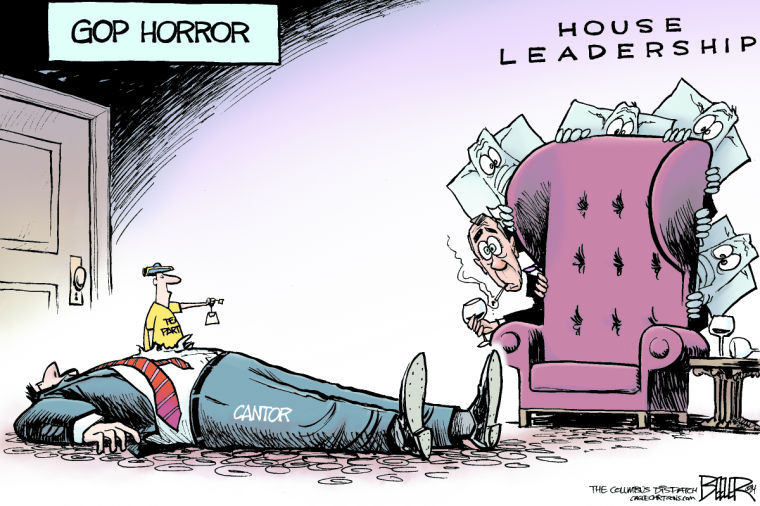Cantor can’t fly with broken right wing
June 18, 2014
The political world experienced the upset of the century last week when incumbent House majority leader Eric Cantor lost in the Republican primary to little-known economics professor David Brat.
Nobody, least of all Cantor’s own camp, expected this outcome. Politico reported his pollster’s internal estimates indicated a win with 62 percent of the vote. There is no doubt that overconfidence contributed to the loss.
This bravado came as a result of numerous factors that were thought to prolong the GOP’s firm hold in Cantor’s 7th district of Virginia.
One such factor was the Republicans’ sweeping victories in the House during 2010. Aided by the emerging Tea Party, the new majority used annual census data to restructure districts. This gerrymandering enabled right-wingers to build districts with strong support, and better prospects for future victories.
Some analysts, including a Reuters blogger, have blamed this restructuring for the standstill that has come to characterize Capitol Hill – the same gridlock that caused sequesters earlier this year and sent many onto furlough.
The Right knows there are only two ways to break this gridlock: elect a Republican president in 2016 or return to Democratic control of the house around 2020, allowing for another restructuring of districts and a strong left-wing support base.
Sometimes, however, the gerrymandering that seems to embolden majority districts can work against them. This was the case in Cantor’s situation.
According to Politico, it was Cantor’s own team that pushed for the inclusion of an extremely conservative New Kent County. Republicans thought such a county would bolster Cantor’s chances of remaining the majority leader, but the county favored his Tea Party rival as did much of the district.
The question then becomes whether it was Cantor’s ignorance regarding his home district that doomed his chances of renomination or the so-called Civil War that rages on among right-wingers.
This fracturing can be attributed in large part to the problem of immigration reform. Brat called Cantor soft on immigration, which is the exact sentiment that single-issue Tea Party voters expressed when they voted him out of office.
Sen. Lindsey Graham (R-SC), who defeated multiple Tea Party contenders in his own state’s primary during the previous week, appeared on CBS saying, “I don’t think Eric got beat because of his stand on immigration. … I think he got beat because his lack of defining himself on immigration.”
It seems the Right doesn’t really know what it wants.
The Brookings Institution has released data that indicates the turbulence Republicans face. The institution’s Primaries Project has shown 16 Tea Party House candidates to win the GOP nomination in states with runoffs sans incumbents, while 81 have lost.
In the Senatorial races, four Tea Party primary candidates have won, while 30 have lost. The future of the Republican Party is uncertain, but here’s what is certain: The Right is fractured, more so than ever before. Immigration has become a central issue in the U.S., and we can expect the Democrats to take advantage of the divided Right’s positions in coming years.
The GOP must adopt a coherent strategy and unite under its banner in order to retain control of the House. The growing Latino vote in America means the Right must empathize with the families split by immigration control, something that will be difficult to achieve as the ultra-conservative Tea Party gains ground.
Defense is another hot-button issue, but I won’t go too in-depth with that here. Cantor was strong on defense spending and support for the Pentagon, while Tea Party candidates look to cut federal spending and gut military expenditures.
Finally, the Republicans will need to rethink their gerrymandering strategies with consideration given to how the Tea Party may take away votes.
If the Right cannot unite, to its control of the House it can say “good night.”









